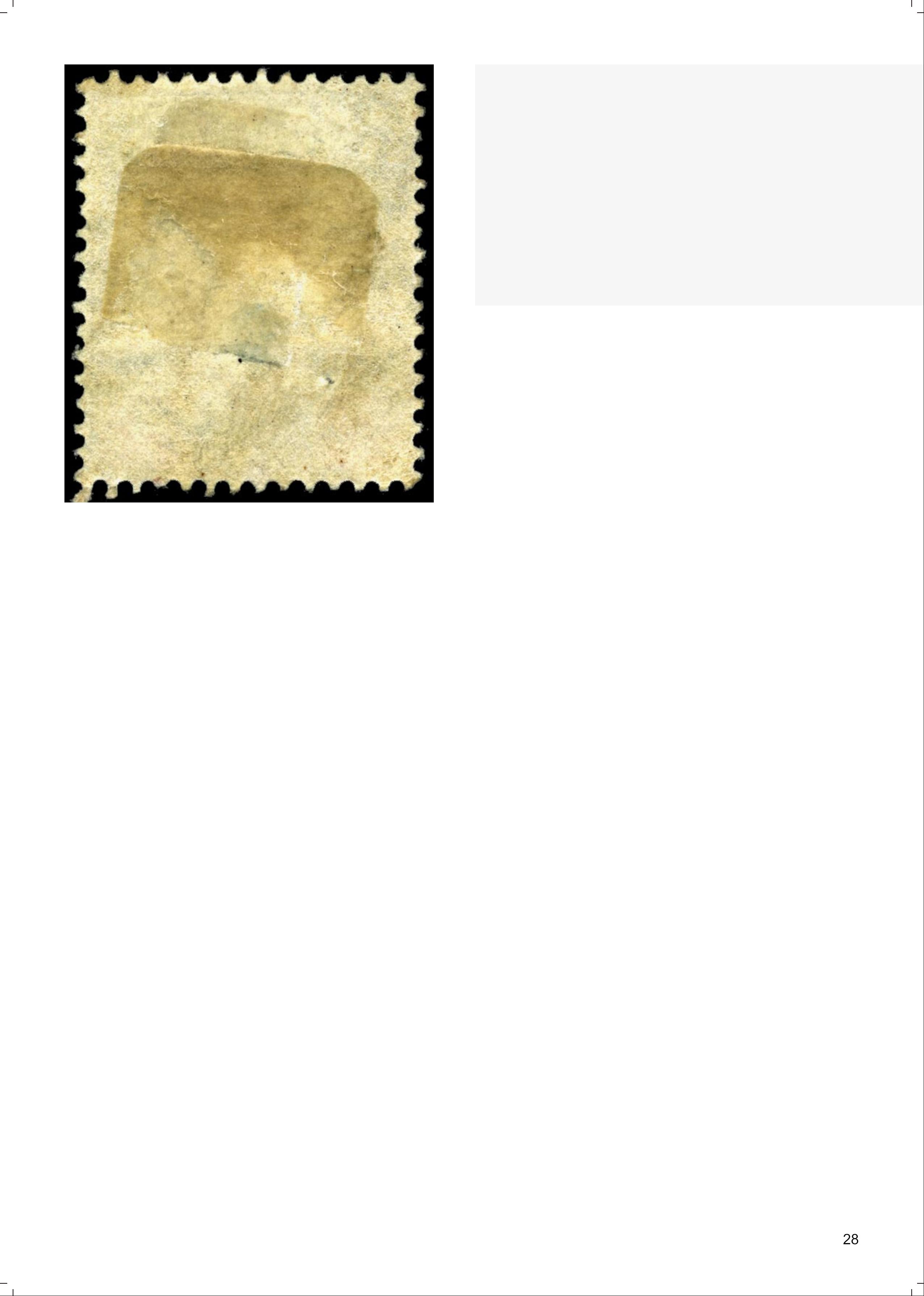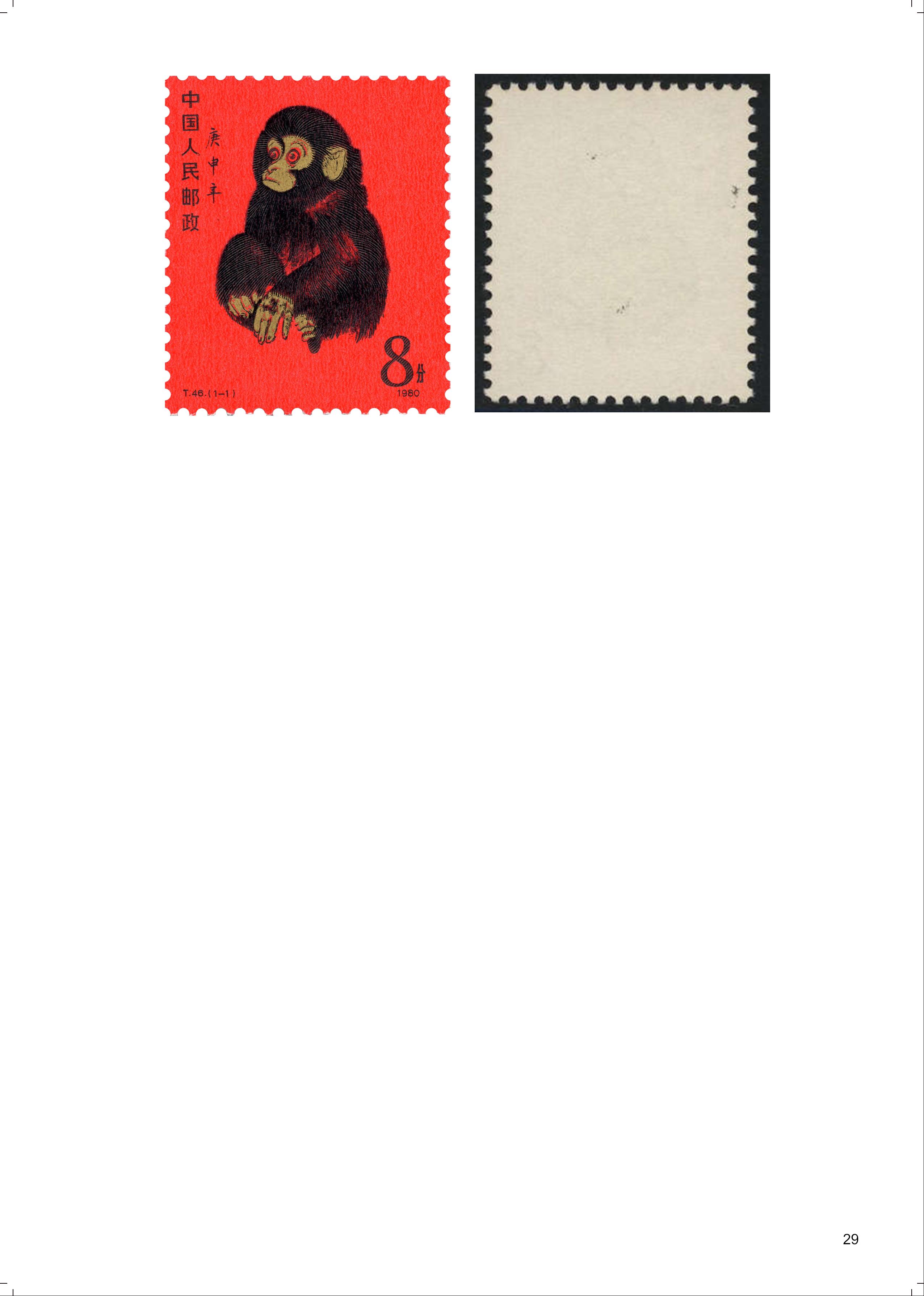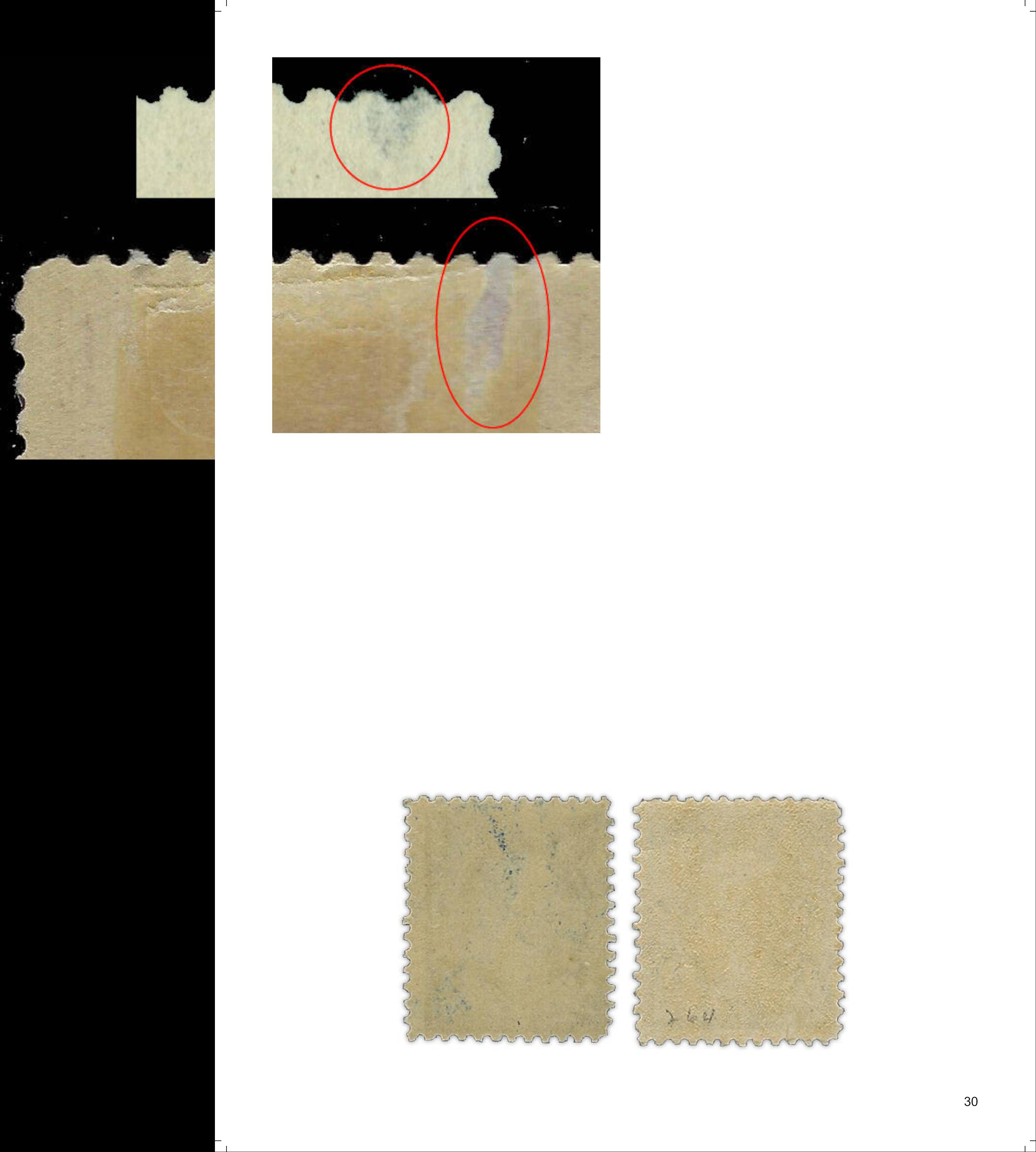Spot a re-gummed stamp
Mike Hall's detailed guide on how to beat the forgers and protect your collection
Stamps are famed for being “the most valuable asset by weight”.
They are worth considerably more per gram than weapons-grade plutonium.
Thankfully, they are less volatile!
If stamps are the most valuable asset on earth, the gum on the back of the stamp could be considered the most valuable substance on earth.
Collectors will pay massive premiums at auction for stamps where all of the original gum remains intact.
For modern stamps, the gum is less relevant as it is relatively easy to buy them in Post Office fresh condition with clean full original gum.

As such, modern mint stamps with full original gum are not particularly rare or valuable.
For stamps issued prior to 1900, however, very few examples have survived with completely undisturbed original gum.
Most stamps would have been placed in stamp albums and, in the earlier days of our hobby, attached to an album page using an adhesive hinge.
When this hinge was removed later it would leave a mark where some of the gum was lost.
There are some rare stamp issues where there is no such thing as an example with full original gum.
In the UK, stamps with all their original gum are generally referred to as “unmounted mint” or abbreviated “U/M”.
In the US, the terminology used is “mint never hinged” or “MNH”.
With the original gum representing such a huge financial benefit, there's always a small number of unscrupulous people who will try to capitalise.
The remnants of adhesive hinges can be found on many stamps where some of the original gum has been lost.

This has brought about two dishonest practices in our industry:
1. The re-gumming of stamps with new gum
2. The redistribution of existing gum to hide stamp hinges and/or tears or holes
There is often little difference between a stamp with redistributed gum and one that has been regummed. The basic processes are very similar.
This poses a huge risk to buyers, as re-gummed stamps are typically valued the same as stamps with no gum. This can turn a £10,000 stamp into £1,000.
Some re-gummed stamps are done so professionally only an expert could identify them. Thankfully, most are quite easy to spot. All you need is a good magnifying glass.
Stamp gum is like paint on a wall. When you try to touch it up with a different brand you will, almost always, be able to spot the difference.
No matter how good the pesky re-gummer is, it's impossible to re-create the exact same conditions under which the original gum was applied and dried onto the stamps.
The detection process is often complex, because the colour of the original gum and the process of applying it to the stamps varied across stamp issues.
In each case, the most effective way is to have a control copy to refer to.
Becoming familiar with the characteristics of the original gum for any particular stamp issue will help you to “spot the difference”.
My general advice is to rely on a trusted expert to help you spot stamps which have been re-gummed.
There are, however, some obvious signs even the novice collector can be alert to.
1. Gum on the perforations
The perforations are the first place most dealers look to detect re-gummed stamps.
Pools of excess gum around the perforation holes are a clear sign the stamp has been re-gummed.
Also, feel the tips of the perforations. If they are stiff, this indicates gum was applied after the stamp was separated from its neighbours on the sheet.
Evidence can also be found on the perforations where gum has been redistributed. If it is dried too slowly, the gum will run into the perforations causing gum stains.
Be wary also of straight perforation tips. Some regummers will trim the perforation tips to remove the gummed paper fibres where excess gum would otherwise be evident.
With practice, even a novice can learn to spot a re-gummed stamp
2. Gum a different colour
If the gum is multi-coloured, the gum has certainly been manipulated.
More than one colour would suggest new gum has been applied, although this can also happen when the original gum has been redistributed.
For some stamp issues, it was common for the original gum to have colour offset ink traces on the gum.
This was caused by newly printed sheets being stacked on top of each other while the gum was still wet. If there are offset ink spots under the gum, then we can be fairly certain the gum is not original.
A good example is the China 1980 Year of the Monkey stamp, where traces of the black ink from the stamp image almost always shows on the gum.

3. Hairs from the brushes
The most common way stamps are re-gummed is by brushing new gum onto the stamp. Brushes can lose hairs, so watch out for loose hairs stuck to the gum.
Other foreign matter can also find its way under the gum, so be suspicious of any stamp where something has found its way underneath the gum.
4. Thinner gum than normal
When the gum has been moistened then redistributed to hide a hinge mark, the gum will be thinner due to some gum being lost during the brushing process.
5. Line of gum application stroke lost
In the printing process, the gum would have been applied to a sheet rapidly in a single motion.
This process usually leads to thin lines drawn out across the direction the gum was applied.
When gum has been redistributed these lines will often be disturbed or erased entirely.
To assess this accurately, you need to familiarise yourself with what typical gum looks like for the particular issue of stamps you are looking at.
It is also important to note that gum characteristics can change over time for the definitive stamps which had a long period of issue.
6. Crackled gum
If the gum has been moistened and redistributed, when it is dried too quickly, the original gum will become crackled all over.
Ink traces can often be found in the original gum, where freshly printed sheets were stacked on top of each other before they had completely dried.If a stamp has been re-gummed to hide damage on the reverse, that damage is often still visible on the front.
7. Damage on front, but not on back
Sometimes stamps are re-gummed to hide defects such as tears and holes. These tears can be hidden under a new coat of gum. A careful study of the front of the stamp can identify faint marks and grooves which do not show on the back.
The most common hidden faults are thin spots. These occur when a stamp hinge is removed carelessly or when the stamp was removed from an album page. These thin spots result in shallow depressions in the paper.
8. Bubbles on gum and more shiny
A relatively recent practice to re-gum stamps is the use of a spray gun. As the spray gun requires air, the air dries leaving bubbles on the gum. Sprayed gum also appears more shiny than normal gum.
The bubbles can be partially brushed away but are usually detectable on close examination.
9. Curling of the stamp
All stamps have a natural curl specific to the issue. This can be caused by the weave of the paper fibres from the manufacture of the paper, or it can be because of the contracting of the gum applied to the stamp.
Consequently, when comparing to a control copy, if you find a stamp where the curl is in a different direction, it is certainly re-gummed.
10. Gum with a layered appearance
Re-gummed stamps often have a layered appearance to the gum.

Under strong magnification, you can sometimes detect the faint brush strokes applied, which will look different to the genuine original gum.
On the examples below, the gum on the right-hand stamp is visibly grainier and also the wrong colour. Furthermore, gum has soaked through to some of the perforation tips.
Different colours & textures in the gum, when compared to a control copy (left), can reveal if the new gum has been applied in a different manner.Better safe than sorry
The easiest way to ensure you don’t unwittingly pay a premium for re-gummed stamps is simply not to collect stamps described as unmounted mint or mint never hinged.
Building a collection of mounted mint stamps removes a large element of the risk
However, when looking at stamps as an investment, the highest growth rates over the years have been for the top condition grade, which means “mint, full original gum” is required.

Other than developing your own experience to detect re-gummed stamps, there are two key things you can do to safely protect yourself:
1. Only buy from dealers you trust
Buy only from those dealers with a long and proven track record of trading honestly.
The most reputable dealers will provide you with a lifetime moneyback guarantee of authenticity as a term of your purchases.
No dealer is perfect and we all make the occasional mistake. The important thing is that the most trustworthy dealers will pay for their own mistakes and not leave their clients with the financial loss.
If you are buying at auction, stick to the most respected auction houses and be very wary when buying from online auctions, particularly eBay.
2. Get an independent certificate of authenticity
The ultimate insurance, which I recommend for any higher value stamp purchases, is to demand an independent certificate of authenticity.
In the UK, the British Philatelic Association and the Royal Philatelic Society carry the most weight although there are other reliable independent expertisers of stamps such as David Brandon and the Philatelic Traders Society.
These independent certificates also enhance the value of your stamps.
Final Word of Caution
Even if a dealer offers a guarantee of authenticity and an independent certificate, these protections are not absolute safeguards.
It is always possible, albeit highly improbable, that the stamp you purchase is not the stamp the certificate was provided for. Certificates include an image of the stamp authenticated, but in the case of a re-gummed stamp, this may not be apparent from the stamp displayed on the certificate.
Thankfully, most stamps are not re-gummed and most dealers and auctions do not engage in unscrupulous activities.
Ultimately, my message to you is this: tread with caution but don’t lose your passion.
